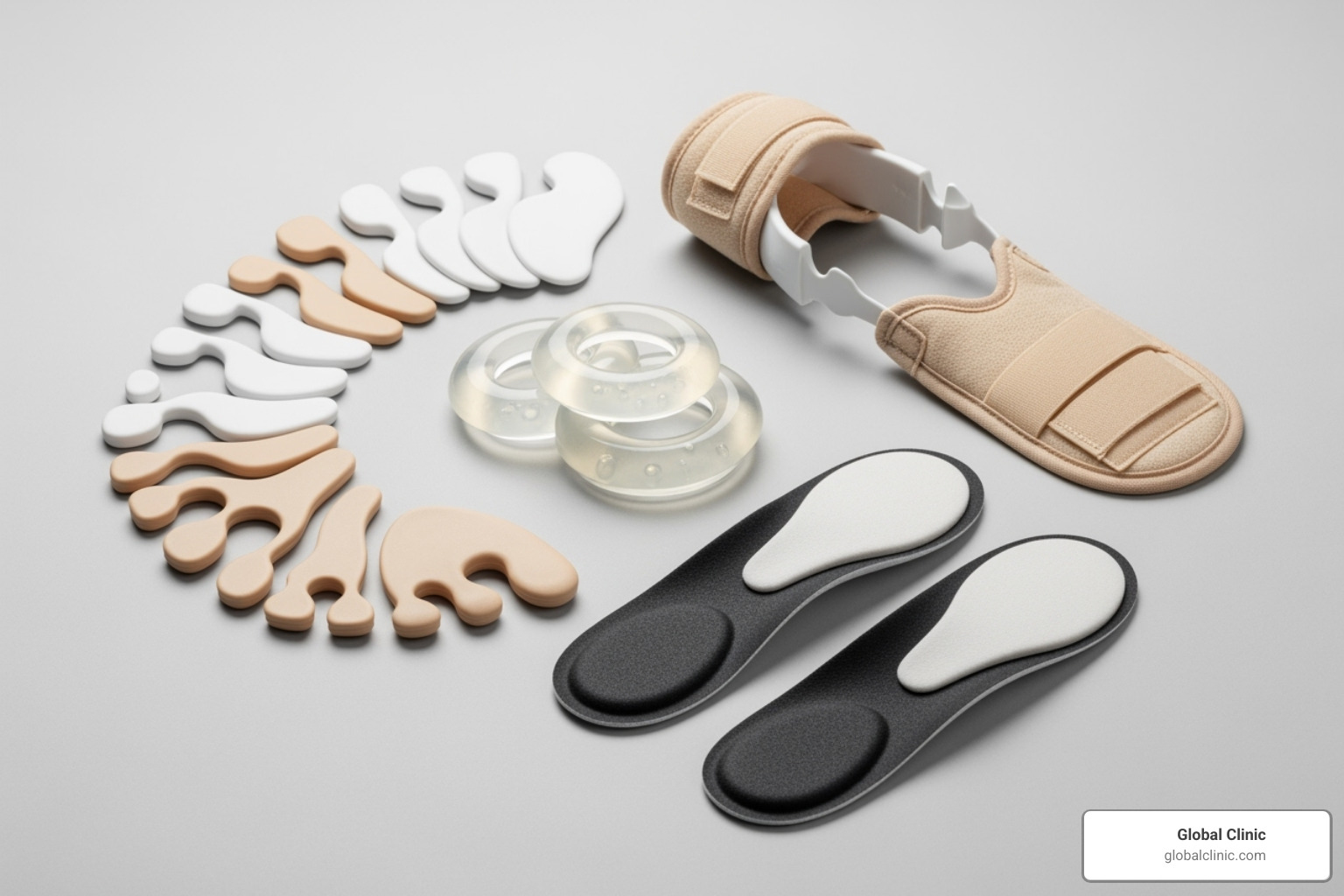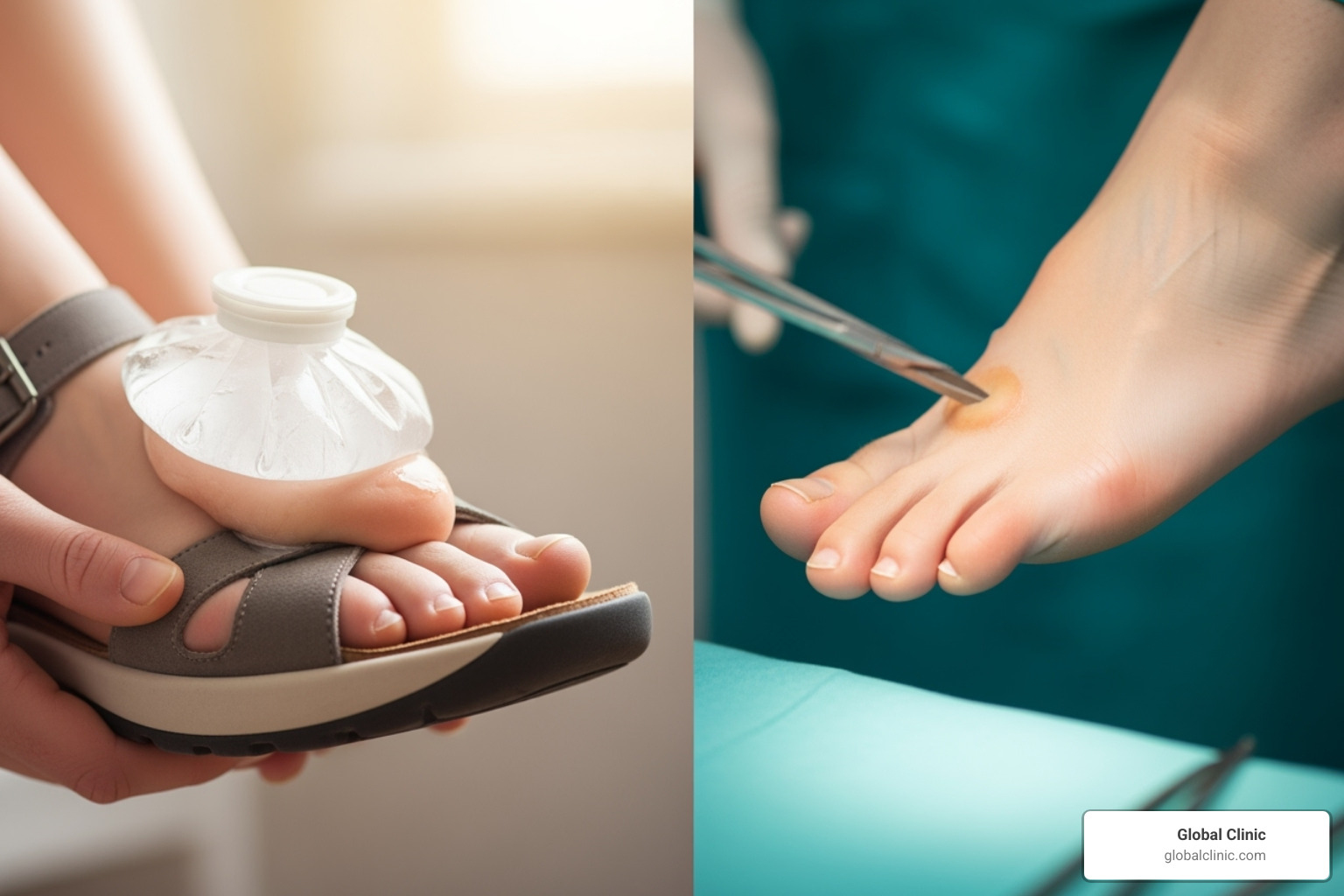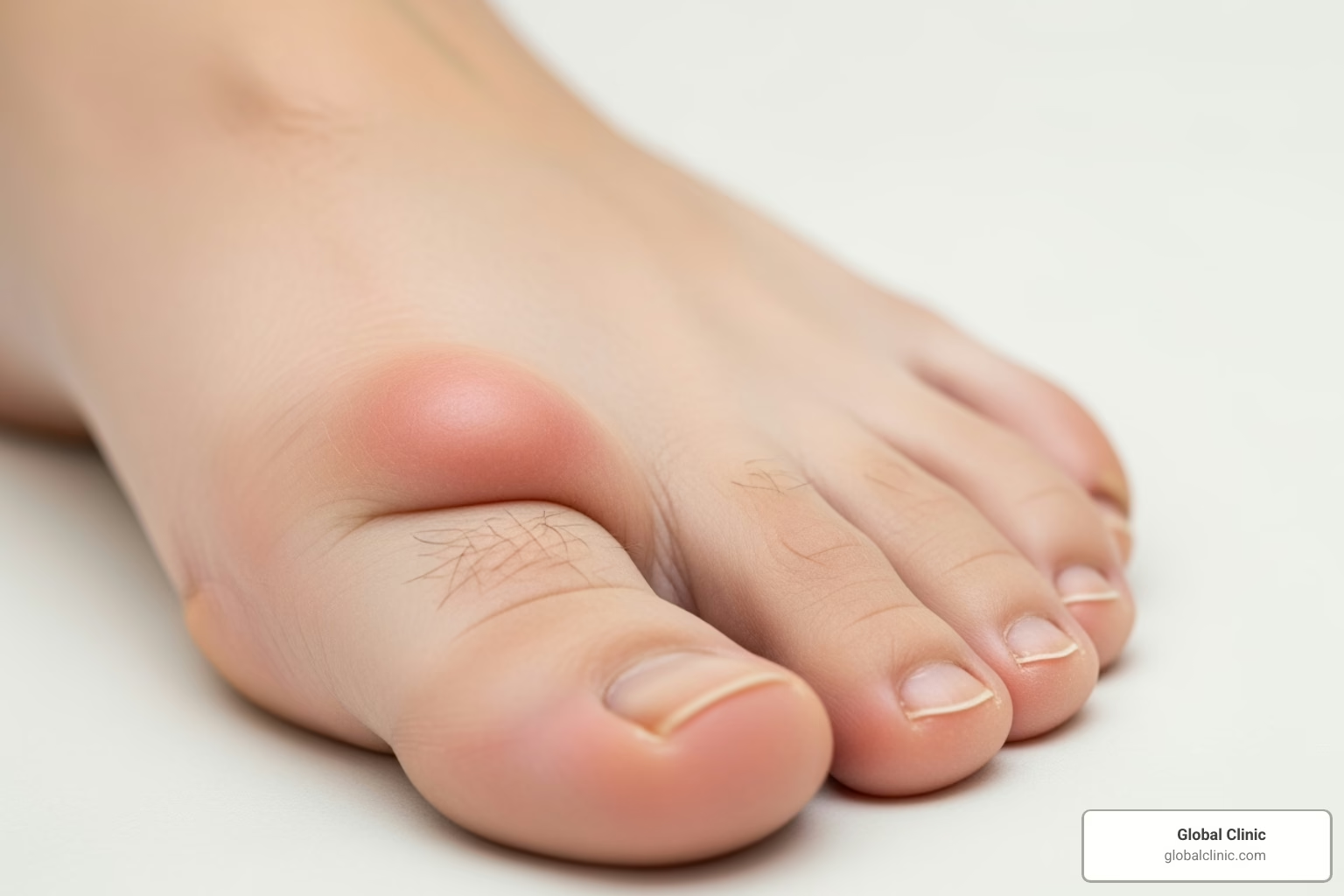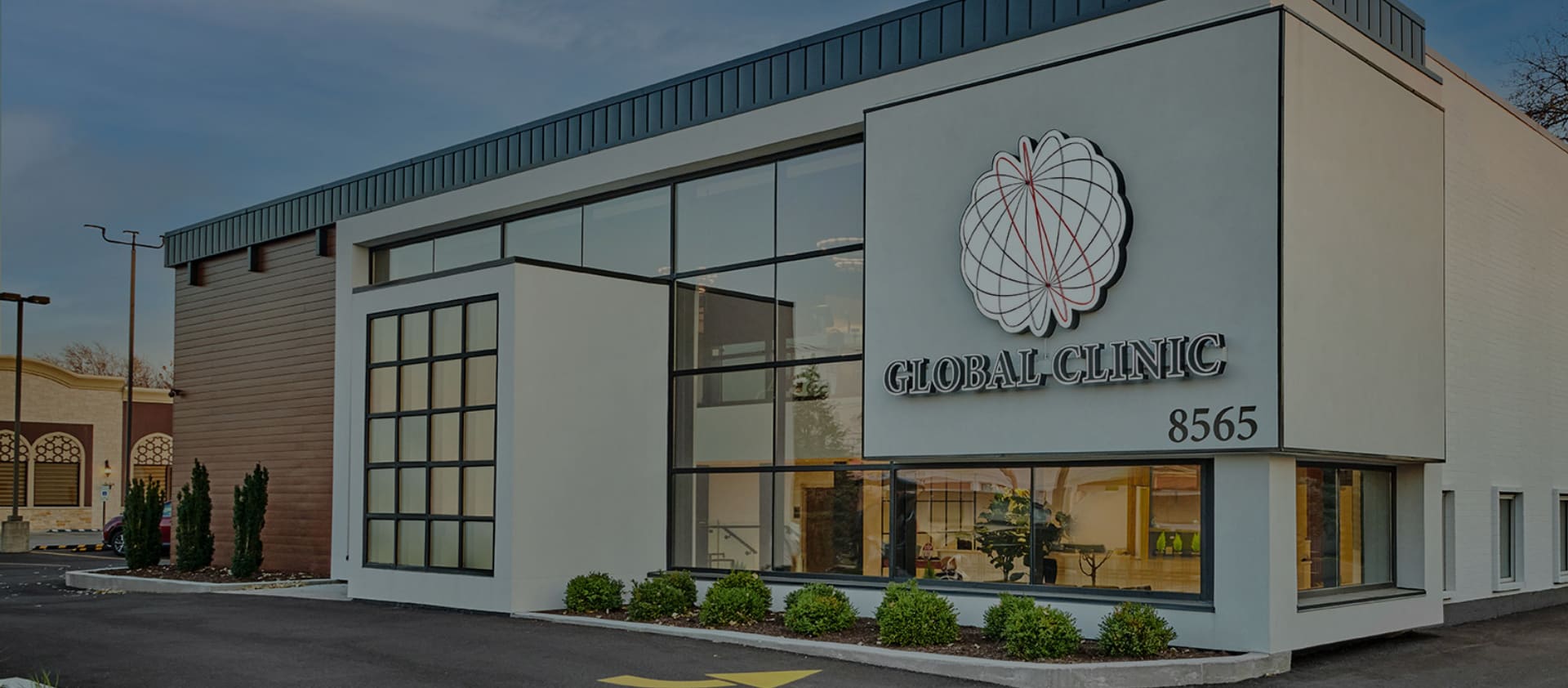What You Need to Know About Non-Surgical Bunion Treatment
Non-surgical bunion treatments offer effective ways to manage pain and slow the progression of that painful bump at the base of your big toe. While surgery is an option, it’s often not the first step.
Quick Answer: Effective Non-Surgical Bunion Treatments
- Proper Footwear: Wide toe box, low heels, soft materials
- Supportive Devices: Bunion pads, toe spacers, custom orthotics
- Pain Management: Ice therapy, NSAIDs, warm soaks
- Exercises: Toe stretches and strengthening movements
- Professional Care: Physical therapy, chiropractic care, podiatric guidance
A bunion, or hallux valgus, is a common condition affecting about 23% of adults aged 18-65 and over 35% of seniors. It’s a progressive bone misalignment caused by pressure on the big toe joint, often from tight shoes, genetics, or foot mechanics. Symptoms include the visible bump, redness, swelling, and pain.
While non-surgical bunion treatments can’t reverse the deformity, they can dramatically reduce pain, improve mobility, and slow progression. The goal is to keep you comfortable and active, and many people successfully manage their bunions for years without an operation.
I’m Ana Vinikov, Practice Manager at Global Clinic. For over 20 years, our multidisciplinary team has helped patients find relief through personalized non-surgical bunion management. We combine proven conservative care with innovative treatments to help you get back on your feet.

Quick Non-surgical bunion terms:
Understanding Bunions: Causes, Symptoms, and When to Seek Help
A bunion (hallux valgus) is more than just a bump; it’s a structural deformity where the big toe joint shifts out of alignment. The big toe drifts inward, pushing the head of the metatarsal bone outward to create the characteristic bony prominence. This is not new bone growth, but the existing bone becoming more prominent.
What’s Behind Your Bunion?
Understanding the cause is key to effective non-surgical bunion treatment. It’s typically a combination of factors:
- Genetics: Over 70% of people with bunions have a family history. Inherited foot types like flat feet or low arches are more susceptible.
- Footwear: This is a major, controllable factor. Pointy, narrow, or high-heeled shoes force toes into unnatural positions, placing constant pressure on the big toe joint.
- Foot Mechanics: Overpronation (when the foot rolls inward excessively while walking) can destabilize the joint over time.
- Other Factors: Inflammatory conditions like rheumatoid arthritis, prolonged standing in certain occupations, and previous foot injuries can also contribute.
Recognizing the Symptoms
Beyond the noticeable bony bump, symptoms can include:
- Pain and tenderness over the joint, which may be constant or flare up with activity.
- Redness and swelling over the bunion.
- Stiffness and limited movement in the big toe joint.
- Corns and calluses where the bunion or toes rub against shoes.
- Difficulty finding comfortable shoes.
How We Diagnose Bunions
At Global Clinic, diagnosis begins with a discussion of your symptoms and lifestyle. A physical exam follows, where we assess toe alignment, range of motion, and check for redness or calluses. We typically order X-rays to see the bone structure, determine the severity of the misalignment, and check for related conditions like arthritis.
What is a Tailor’s Bunion?
A tailor’s bunion, or bunionette, is a smaller bump on the opposite side of the foot, at the base of the pinkie toe. It shares similar causes (narrow shoes, faulty mechanics) and symptoms (pain, redness, swelling) with a regular bunion. The good news is that non-surgical bunion treatments for a bunionette are virtually the same. Learn more at Tailor’s Bunion (Bunionette).
Signs It’s Time to See a Professional
While some discomfort can be managed at home, seek professional help if you experience:
- Persistent pain that interferes with daily activities or sleep.
- Difficulty walking or changes in your gait.
- Rapid changes in your foot’s shape or a quickly growing bump.
- Inability to find any comfortable shoes.
- Numbness, tingling, or burning sensations in your toes.
Our team of specialists at Global Clinic serves Northern Chicago and surrounding areas like Arlington Heights, Barrington, and Glenview. We create personalized plans to help you find relief. Understanding podiatric care and knowing the 4 signs that it’s time to see a podiatrist are the first steps toward better foot health.
Foundational Non-Surgical Bunion Management at Home
The foundation of non-surgical bunion care begins at home with practical changes to manage pain and slow the bunion’s progression. These steps, as noted by sources like the Mayo Clinic, are the first line of defense and can provide significant relief. You can learn more about practical strategies with resources like How to step up to manage bunions.
The Critical Role of Footwear
Proper footwear is your most powerful tool for pain relief. Making smart choices about your shoes can be life-changing for managing bunion discomfort.

What makes a shoe “bunion-friendly”? Focus on these key features:
- Wide Toe Box: Your toes need room to spread out naturally without being pinched or squeezed.
- Low Heels: Heels over an inch shift weight onto the ball of your foot, aggravating the bunion. Stick to flats or heels under one inch.
- Soft, Flexible Materials: Choose materials like leather, canvas, or mesh that conform to your foot’s shape and reduce friction against the bunion.
- Proper Sizing: Get measured at the end of the day when feet are largest. Ensure a half-inch of space past your longest toe and always fit the larger foot.
- Good Arch Support: This helps distribute pressure evenly across the foot, correcting biomechanical issues that contribute to bunions.
Key Features for Bunion-Friendly Shoes:
- Wide, foot-shaped toe box (not pointed)
- Heels under 1 inch, or flat
- Soft, flexible materials
- Proper sizing with a half-inch past your longest toe
- Good arch support
- Snug heel with minimal slippage
- Lace-ups for better adjustability
- Comfort over fashion—always
When shopping, walk around in the shoes to test their comfort in motion. A shoe that’s uncomfortable in the store will not improve at home.
Supportive Devices and Orthotics
Beyond shoes, several supportive devices can improve your non-surgical bunion management by cushioning the joint and improving alignment.

- Bunion Pads and Gel Cushions: These simple pads stick over the bunion to act as a buffer between the bump and your shoe, reducing friction and pressure.
- Toe Spacers: Placed between the big and second toes, they gently push the big toe toward a more natural alignment, providing relief while worn.
- Night Splints: Worn during sleep, these devices hold the big toe in a straighter position to gently stretch surrounding tissues and maintain alignment overnight.
- Orthotics: These shoe inserts correct biomechanical imbalances. Over-the-counter versions offer general support and are a good starting point. For more significant issues, custom orthotics are molded specifically to your feet. They provide personalized support, redistribute pressure away from the bunion, and address the root cause of instability. Our podiatrists at Global Clinic can assess if custom orthotics are right for you.
While these devices provide genuine relief, they manage symptoms and do not permanently correct the bone structure. They are valuable tools in a comprehensive management plan.
Active Approaches to Non-Surgical Bunion Relief
While footwear and devices are your defense, active approaches like exercises and pain management techniques are your offense against bunion pain. These methods strengthen foot muscles, improve flexibility, and reduce inflammation.
At Global Clinic, our physical therapy and chiropractic teams serving Northern Chicago create comprehensive plans that examine your entire body’s biomechanics, as the root cause of foot pain isn’t always in the foot itself.
Effective Exercises and Stretches for Bunion Pain
Specific exercises can alleviate symptoms and improve foot function, though they won’t reverse the bunion’s structure. Consistency is key for seeing results.

- Toe Spreads: With your foot flat on the floor, try to spread your toes apart, focusing on moving the big toe away from the second. Hold for 5-10 seconds and repeat 10-15 times.
- Towel Scrunches: While seated, use your toes to grip and pull a small towel on the floor toward you. This strengthens small muscles in your arch and toes.
- Marble Pickups: Use your toes to pick up marbles one by one and place them in a cup. This improves toe dexterity and strength.
- Big Toe Stretches: Gently pull your big toe away from the second toe, then gently pull it up and down. Hold each stretch for 20-30 seconds to maintain joint flexibility.
- Calf Stretches: Tight calves can alter foot mechanics and increase pressure on the forefoot. Regular wall stretches can relieve this pressure.
Managing Pain and Inflammation
Even with preventative care, bunions can flare up. These techniques can help manage painful episodes.
- Ice Therapy: For acute pain and inflammation, apply an ice pack wrapped in a towel to the bunion for 15-20 minutes. This reduces swelling and numbs pain.
- Warm Soaks: Soaking feet in warm water, with or without Epsom salts, can be soothing, improve circulation, and ease muscle soreness.
- Over-the-Counter Pain Relievers: Nonsteroidal anti-inflammatory drugs (NSAIDs) like ibuprofen (Advil) and naproxen sodium (Aleve) reduce both pain and inflammation. Acetaminophen (Tylenol) helps with pain but not inflammation. Always follow package directions and consult a professional for prolonged use.
- Cortisone Injections: For severe, persistent pain, a podiatrist may recommend a cortisone injection. This delivers powerful anti-inflammatory medication directly to the joint for temporary, but significant, relief.
Combining these strategies creates a multi-layered approach to your non-surgical bunion care plan.
Comparing Non-Surgical vs. Surgical Bunion Treatment
One of the first questions people with bunion pain ask is, “Do I need surgery?” For most, the answer is no, at least not initially. Non-surgical bunion treatments are highly effective for managing symptoms and maintaining an active life.
Conservative care is always our first line of defense because it’s less invasive and carries fewer risks. Surgery is typically reserved for cases where these measures fail to provide adequate relief and quality of life is severely impacted.
The key difference is the goal: non-surgical bunion care manages symptoms, while surgery corrects the underlying bone deformity. For more on treatment options, visit our page on Foot Pain Podiatry.
Benefits and Limitations of a Non-Surgical Bunion Approach
Understanding what conservative care can and cannot do is crucial for setting realistic expectations.
What Non-Surgical Treatment Does Well:
- Provides Pain Relief: Most people experience a significant reduction in daily discomfort.
- Slows Progression: While not a reversal, it can delay or prevent the bunion from worsening.
- Avoids Surgical Risks: There is no anesthesia, infection risk, or prolonged recovery.
- Is Affordable and Convenient: It requires less cost and time away from work or activities.
The Honest Limitations:
- Cannot Correct the Deformity: The bony bump will not disappear without surgery.
- Is Symptom Management, Not a Cure: It addresses pain and function, but the structural issue remains.
- Requires Consistent Effort: Success depends on your commitment to wearing proper footwear and doing exercises.
- May Be Insufficient for Severe Cases: For very large or painful bunions, surgery may become the better long-term solution.

The table above highlights these key differences. At Global Clinic, we help you decide which approach is best for your pain level, lifestyle, and goals.
Can Bunions Be Prevented?
While you can’t change your genetics, you can take steps to reduce your risk or prevent mild bunions from worsening.
- Choose Proper Footwear Early: Especially for children, avoid narrow, pointed shoes. Opt for wide toe boxes to allow for natural foot development.
- Maintain a Healthy Weight: This reduces the overall pressure on your feet and joints with every step.
- Address Foot Mechanics Early: If you have flat feet or overpronation, addressing these issues with orthotics can prevent the stress that leads to bunions.
Early intervention with supportive measures offers the best chance of avoiding significant bunion problems.
Foundational Non-Surgical Bunion Management at Home
When it comes to non-surgical bunion treatment, home strategies are your first line of defense. Simple changes can reduce pain and slow progression. The Mayo Clinic also emphasizes practical steps for day-to-day relief. Learn more at How to step up to manage bunions.
The Critical Role of Footwear
Shoes make the biggest difference. Aim for:
- Wide, foot-shaped toe boxes so toes can spread naturally
- Heels under 1 inch to avoid forefoot pressure
- Soft, flexible uppers (leather, canvas, mesh) to reduce rubbing
- Proper sizing with about a half-inch past your longest toe
- Good arch support for better pressure distribution
Walk-test shoes before buying. If they are uncomfortable in the store, they will not improve at home.
Supportive Devices and Orthotics
Add-on supports can improve comfort and alignment while worn:
- Bunion pads or gel cushions to reduce shoe friction and pressure
- Toe spacers to gently separate the big and second toes
- Night splints to hold the big toe straighter during sleep
- Orthotics (over-the-counter or custom) to address mechanics and redistribute pressure
These tools relieve symptoms and can slow progression, but they do not permanently correct the bone alignment. Our podiatrists at Global Clinic can help determine if custom orthotics are right for you.
Active Approaches to Non-Surgical Bunion Relief
Active care complements good footwear and supports. Our physical therapy and chiropractic teams in Northern Chicago (including Schaumburg, Wood Dale, and Melrose Park) build programs that strengthen feet, improve flexibility, and manage inflammation.
Effective Exercises and Stretches for Bunion Pain
These simple moves help comfort and function (they do not reverse the bunion):
- Toe spreads: With feet flat, spread toes, focusing on moving the big toe away from the second. Hold 5-10 seconds. Repeat 10-15 times.
- Towel scrunches: Use toes to pull a towel toward you. Aim for 3 sets of 10.
- Marble pickups: Use toes to pick up small objects and place them in a cup.
- Big toe stretches: Gently pull the big toe away from the second, then up and down. Hold 20-30 seconds.
- Calf stretches: Regular wall stretches reduce forefoot pressure and improve ankle mobility.
Consistency matters. Our therapists can tailor a plan to your needs.
Managing Pain and Inflammation
- Ice therapy: Apply an ice pack wrapped in a towel for 15-20 minutes to reduce swelling and pain.
- Warm soaks: Warm water (with or without Epsom salts) can ease soreness. Some people alternate warm and cold.
- Over-the-counter pain relievers: NSAIDs like ibuprofen or naproxen reduce pain and inflammation; acetaminophen helps pain. Follow label directions and consult a professional for prolonged use.
- Cortisone injections: For severe, persistent pain, a podiatrist may recommend a targeted injection for temporary relief.
Combining these strategies creates a strong non-surgical bunion plan.
Comparing Non-Surgical vs. Surgical Bunion Treatment
Many people manage bunions well without surgery. Others consider surgery when conservative care no longer controls pain or function. For more on foot pain options, visit Foot Pain Podiatry.
Benefits and Limitations of a Non-Surgical Bunion Approach
What non-surgical care does well:
- Provides meaningful pain relief for most people
- Helps slow or halt progression
- Avoids surgical risks and downtime
- Is generally more affordable and convenient
Honest limitations:
- Does not correct the bone deformity
- Manages symptoms rather than cures the bunion
- Requires consistent effort (footwear, exercises, devices)
- May be insufficient for very severe or disabling cases
Can Bunions Be Prevented?
You cannot change genetics, but you can reduce risk and slow progression:
- Choose proper footwear early (wide toe boxes, low heels)
- Maintain a healthy weight to reduce foot load
- Address foot mechanics with orthotics if needed
- Start conservative care at the first signs of drift or a bump
Global Clinic can assess your mechanics, set realistic goals, and build a personalized plan that keeps you active with the least invasive approach first.


